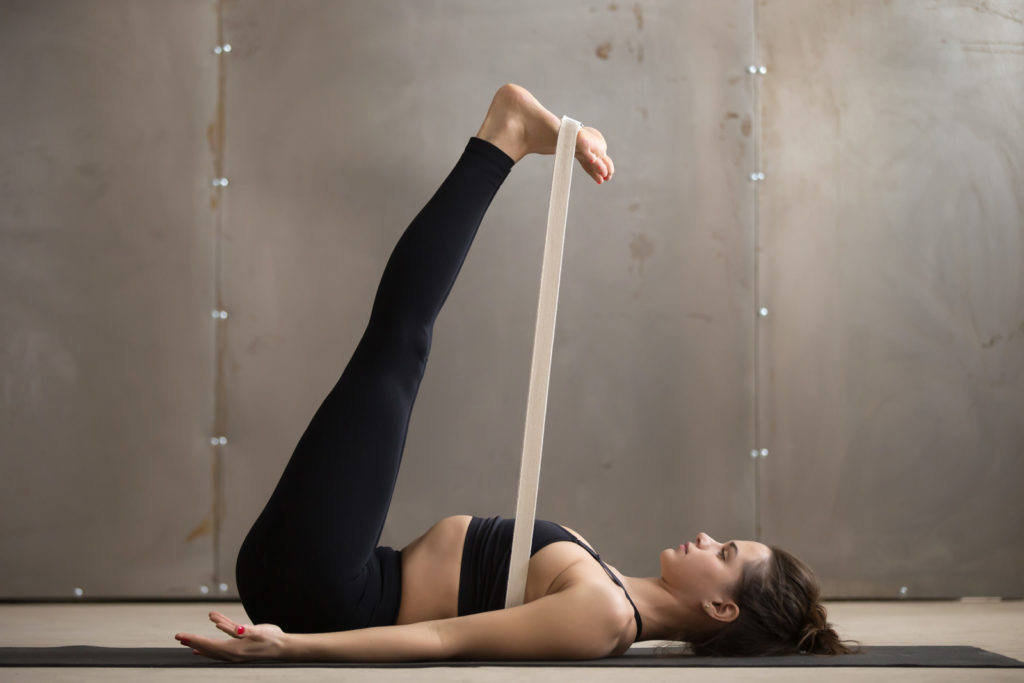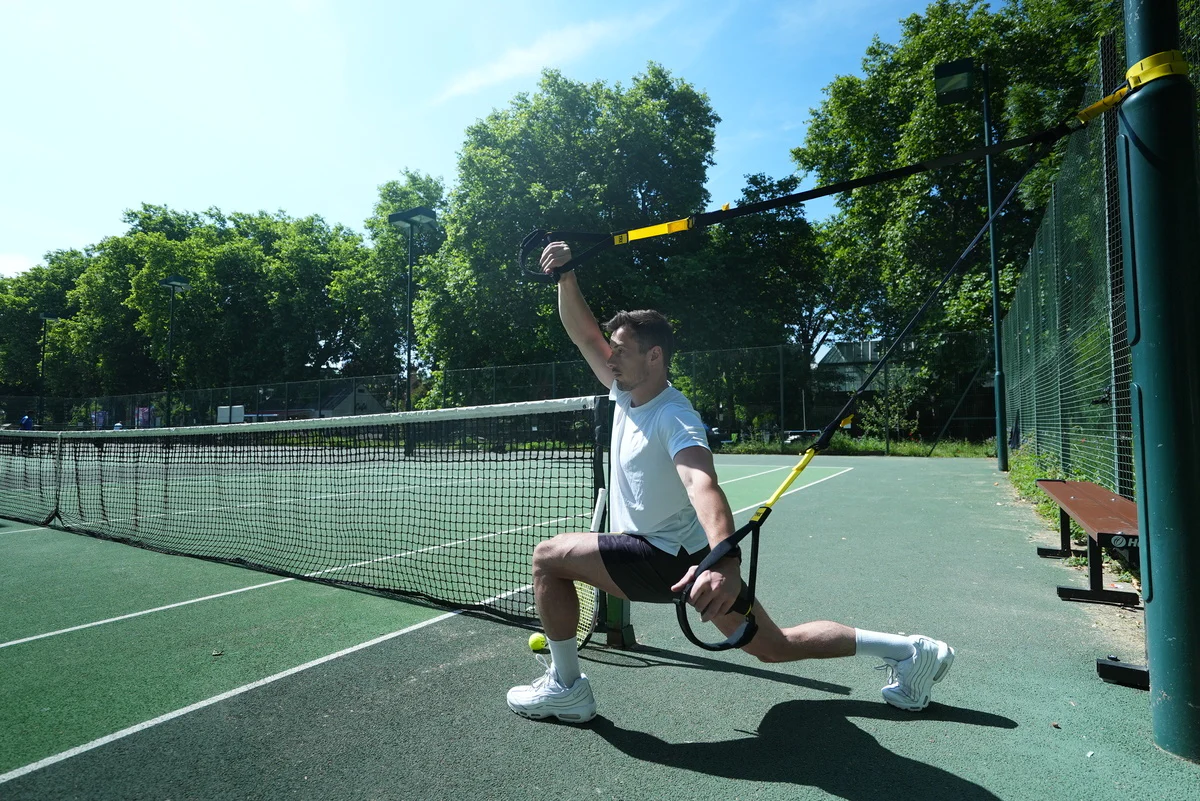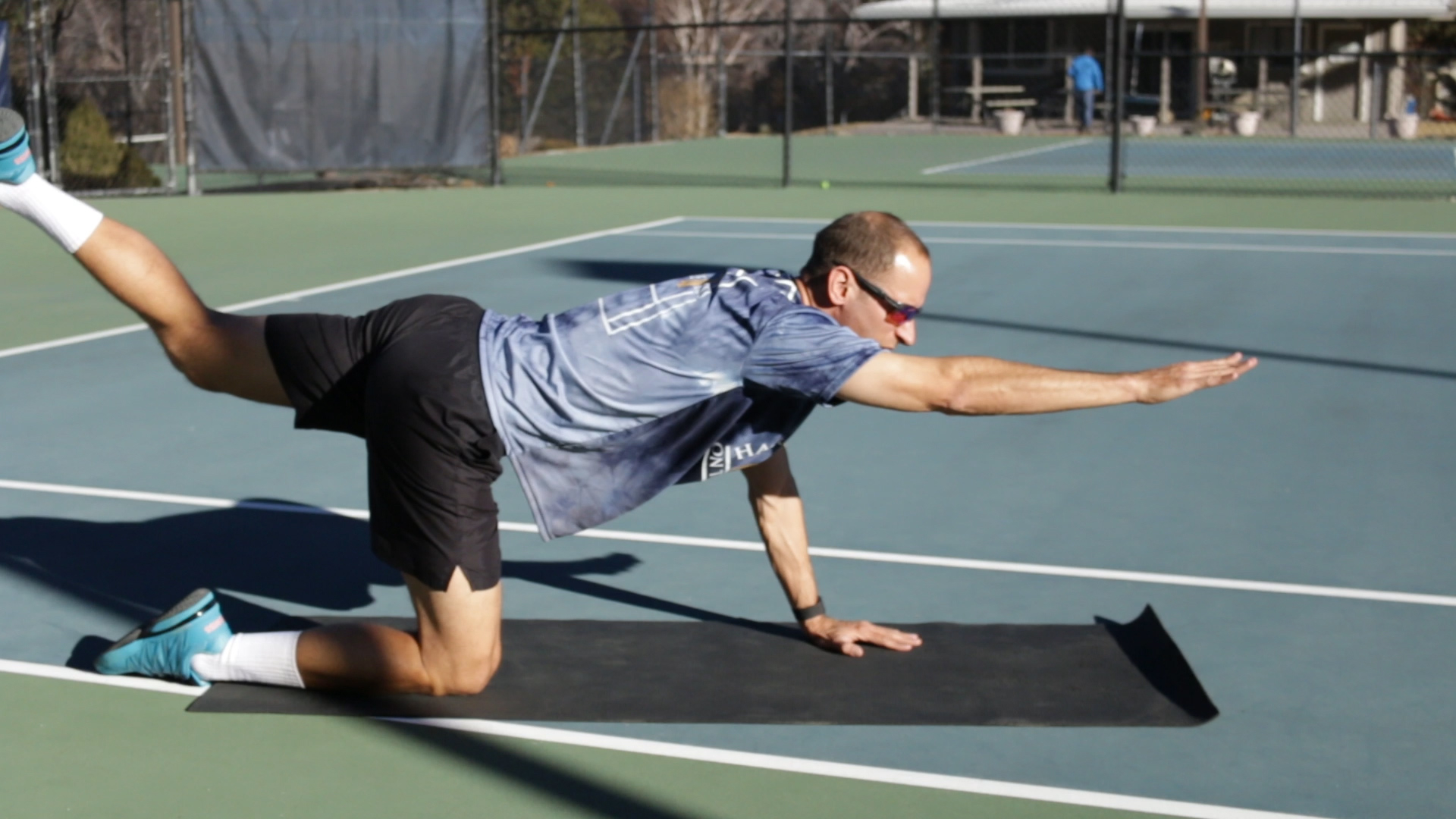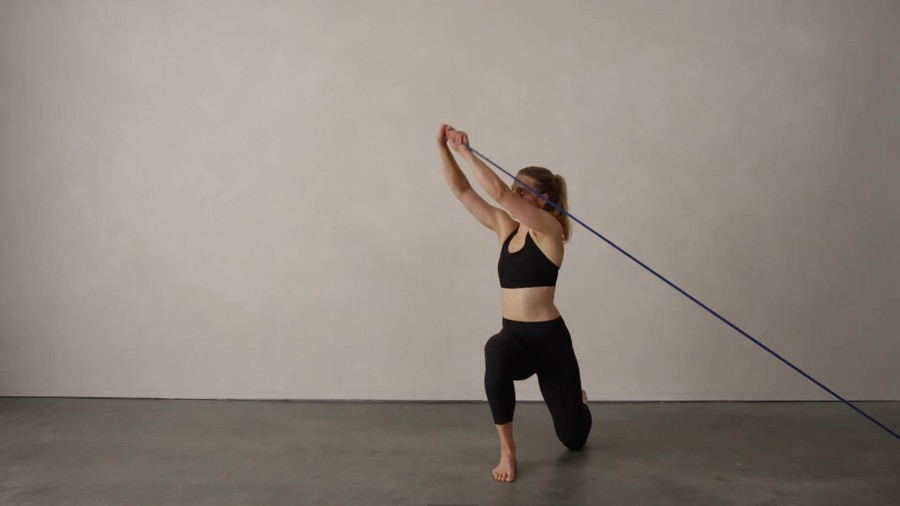Tennis demands an elite level of physical fitness to keep up with the game’s unique mix of explosive movements, endurance, and core stability. To maximize performance on the court, incorporating specific exercises into training is key. In this post, we will share the 13 most beneficial exercises for improving a tennis player’s strength, speed, agility, and injury prevention. From resistance band work to plyometrics and medicine ball drills, we’ll cover a comprehensive range of workout moves engineered to enhance all the athletic attributes required for top-tier tennis.

Contents
- 1 13 Best Exercises For Tennis Players
- 1.1 1. Dynamic Warm-Up:
- 1.2 2. Lateral Lunges:
- 1.3 3. Plyometric Drills:
- 1.4 4. Core Strengthening:
- 1.5 5. Agility Training:
- 1.6 6. Medicine Ball Throws:
- 1.7 7. Single-Leg Exercises:
- 1.8 8. Shoulder Strengthening:
- 1.9 9. Speed Training:
- 1.10 10. Flexibility Work:
- 1.11 11. Balance Exercises:
- 1.12 12. Endurance Training:
- 1.13 13. Recovery Techniques:
- 1.14 1. Should tennis players incorporate squats into their workout routine?
- 1.15 2. Can I practice tennis exercises at home?
- 1.16 3. How do tennis players improve their cardio?
- 1.17 4. How can I build a body fit for tennis?
- 1.18 5. Which exercises are ideal for tennis players?
13 Best Exercises For Tennis Players
Tennis is a physically demanding sport that requires a combination of strength, speed, agility, and endurance. Here are 13 of the best exercises for tennis players to improve their overall fitness and performance on the court:
1. Dynamic Warm-Up:
Dynamic warm-up exercises, such as arm circles and leg swings, prepare tennis players’ bodies for the demands of the sport. By increasing blood flow and flexibility, dynamic warm-ups help prevent injuries and enhance performance on the court.
2. Lateral Lunges:
Lateral lunges target the adductors, glutes, and quadriceps, improving lateral stability and mobility. This exercise mimics the side-to-side movements common in tennis, enhancing players’ ability to move quickly and efficiently during matches.
3. Plyometric Drills:
Plyometric drills, like box jumps and lateral bounds, focus on developing explosive power and quickness essential for tennis. By improving the ability to generate force rapidly, plyometric exercises enhance speed and agility on the court.

4. Core Strengthening:
Core strengthening exercises, such as planks and Russian twists, build stability and power in the abdominal and lower back muscles. A strong core is crucial for maintaining balance and transferring power efficiently during strokes and movements in tennis.
5. Agility Training:
Agility training, involving cone drills and shuttle runs, enhances footwork, reaction time, and change of direction abilities. These exercises help tennis players move swiftly and responsively across the court, enabling them to reach and return shots effectively.
6. Medicine Ball Throws:
Medicine ball throws, including overhead throws and chest passes, develop rotational power and upper body strength. This exercise improves the strength and coordination necessary for powerful serves and groundstrokes in tennis.

7. Single-Leg Exercises:
Single-leg exercises, like squats and deadlifts, correct muscle imbalances and improve stability, particularly in the ankles and knees. By enhancing proprioception and balance, single-leg exercises reduce the risk of injury and improve overall performance on the court.
8. Shoulder Strengthening:
Shoulder strengthening exercises target the rotator cuff muscles and deltoids, essential for racket control and preventing shoulder injuries in tennis players. Strengthening the shoulder muscles improves serve power and accuracy, crucial for dominating matches.

9. Speed Training:
Speed training, through sprint intervals and agility drills, enhances speed, acceleration, and change of direction abilities. These exercises are vital for covering the court quickly and efficiently, enabling players to reach and return shots with precision.
10. Flexibility Work:
Flexibility exercises, including static and dynamic stretches, improve range of motion and prevent muscle tightness. Enhanced flexibility reduces the risk of injuries and allows tennis players to execute strokes with greater efficiency and fluidity.
11. Balance Exercises:
Balance exercises, such as stability ball exercises and single-leg stands, improve proprioception and stability on the court. Better balance enables tennis players to maintain control during dynamic movements and execute shots with precision.
12. Endurance Training:
Endurance training, through cardiovascular exercises like running or cycling, improves overall stamina and energy levels during long matches or tournaments. Enhanced endurance ensures that tennis players can sustain high-intensity efforts throughout the entirety of a match.
13. Recovery Techniques:
Recovery techniques, such as foam rolling and active recovery exercises, help alleviate muscle soreness and expedite recovery between training sessions and matches. Adequate recovery is essential for preventing injuries and maintaining peak performance on the court.
Frequently Asked Questions
1. Should tennis players incorporate squats into their workout routine?
Yes, specifically, single leg squats are highly beneficial for tennis players. They not only fortify the legs but also enhance balance and stability, which are crucial for movements on the tennis court.
2. Can I practice tennis exercises at home?
Absolutely! You can implement activities like playing against a wall, shadow swings, and bouncing the ball with both your forehand and backhand. These exercises can significantly boost your performance once you hit the court.
3. How do tennis players improve their cardio?
Tennis players often rely on high-intensity interval activities, which involve abrupt stops and rapid short-distance runs. These workouts help enhance speed, endurance, agility, and acclimate muscles and joints to the impact levels involved in sudden directional changes on hard surfaces.
4. How can I build a body fit for tennis?
A combination of push-ups, triceps push-up, plank, London bridges (plank variation), skaters, fast feet, and high knees can help you build a tennis-ready body. Regularly performing these exercises will yield substantial improvements in your physique and performance.
5. Which exercises are ideal for tennis players?
Ideal exercises for tennis players include Plyometric Lunges and Torso Rotation, which helps develop explosive strength and power. Lateral Shuffles and External Shoulder Rotation exercises can boost agility and reduce injury risk. Moreover, Back Extensions can be extremely beneficial in enhancing your posture and serving power.

Hello, I’m Ravindra. Over the years, I’ve immersed myself deeply into the world of fitness and health, transforming both my body and mind. Writing has allowed me to share my journey, insights, and expertise with those just starting out and seasoned fitness enthusiasts alike. Beyond just routines and diets, I believe in inspiring others to adopt a holistic approach to well-being.
